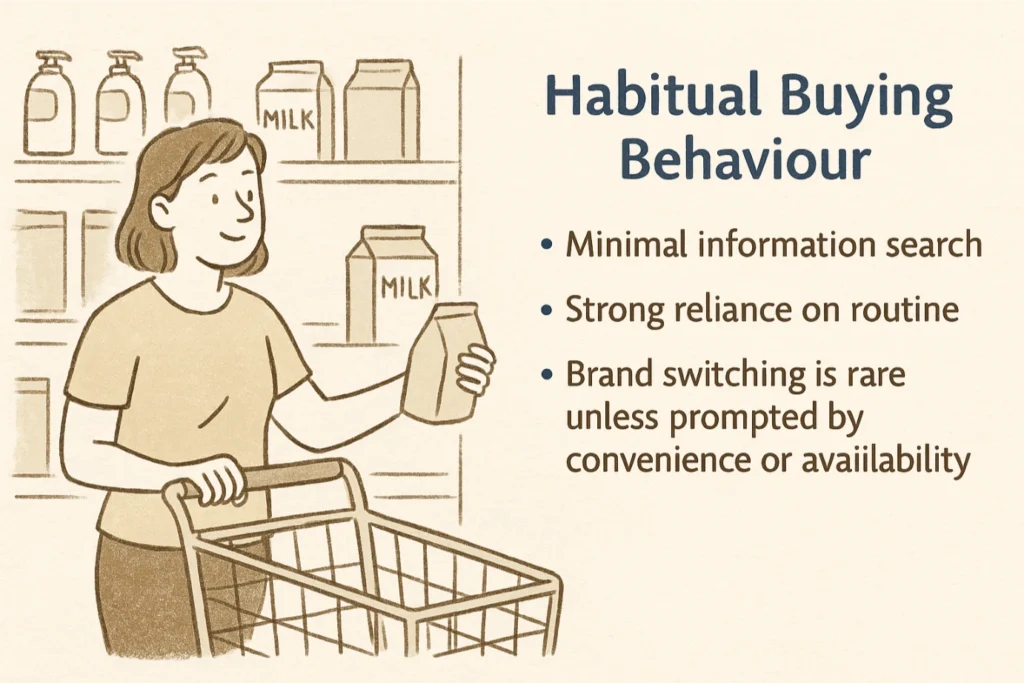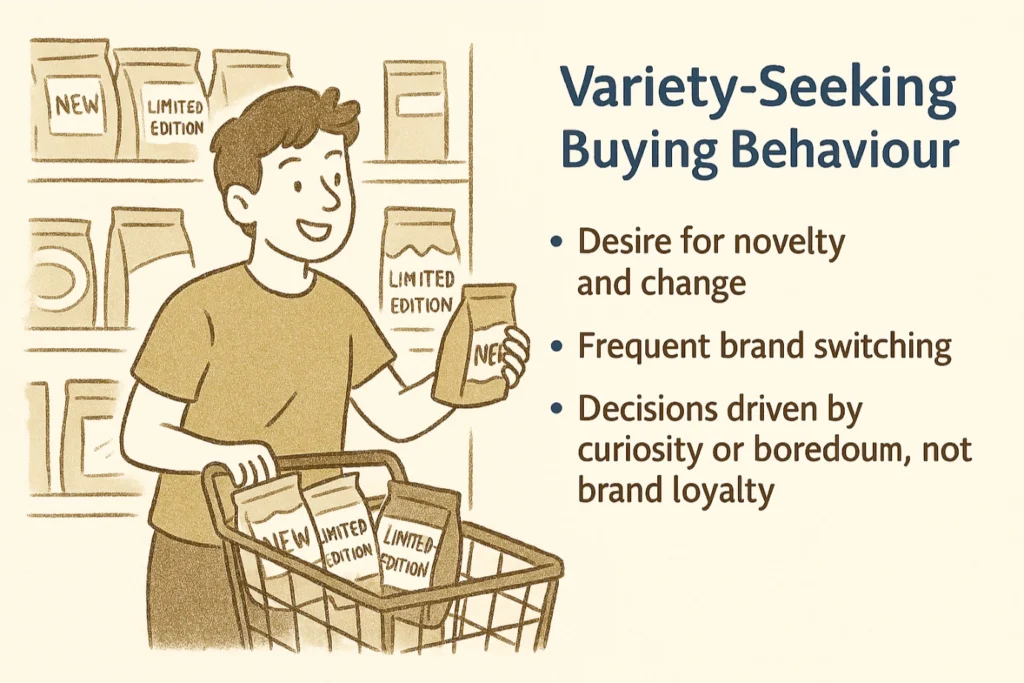Understanding customer behaviour is at the core of effective marketing. Whether you’re launching a new campaign, designing a product, or building your brand, being able to anticipate and respond to how people think, feel, and act is what sets successful marketers apart. But what exactly is customer behaviour, and why is it so important? In this guide, we’ll delve into the psychology behind buying decisions, examine the primary types of customer behaviour, and offer practical insights to help marketers gain a deeper understanding of their audience.
Key Takeaway:
- Understanding customer behaviour empowers brands to predict, influence, and meet customer needs at every stage of the buying process.
- Key factors such as psychological, social, cultural, personal, and economic influences all play a vital role in shaping how and why customers make purchase decisions.
- Applying customer behaviour insights helps businesses personalise marketing, enhance customer experiences, drive innovation, and build long-term loyalty.
What Is Customer Behaviour?
Customer behaviour encompasses the actions, attitudes, and decision-making processes that people undergo when choosing, purchasing, using, or disposing of products and services. It includes the entire journey, from the moment a need pops up to how they feel about their purchase afterwards, including whether they stick with a brand or move on.
The Stages of the Buying Process
Knowing the stages of the buying process allows marketers to predict and assist customers throughout their journey. Here’s a brief overview:
- Need Recognition: The customer becomes aware of a problem or desire, triggering the motivation to search for a solution.
- Information Search: The customer actively looks for options, comparing brands, seeking advice, and researching online or offline.
- Evaluation of Alternatives: Different products or services are assessed based on features, price, and value, narrowing down the choices.
- Purchase Decision: The customer makes their selection and completes the purchase.
- Post-Purchase Evaluation: After buying, the customer reflects on their satisfaction, which can influence brand loyalty and future purchasing behaviour.
Want to turn each stage of the buying process into real results?
📚 Read our guide: How Can You Build an Effective Marketing Funnel That Converts?
Key Factors Influencing Customer Buying Behaviour
Many factors affect how and why customers decide to purchase. Here are some of the key ones, each contributing uniquely to shaping behaviour:
Psychological Factors
Psychological factors play a crucial role in every purchasing decision. Motivation, perception, attitudes, beliefs, and learning processes all influence how customers perceive value, interpret information, and make choices. For instance, a customer’s positive attitude towards a brand, often shaped by past experiences, can boost the chance of repeat business.
- Motivation: What needs or desires trigger a purchase?
- Perception: How do customers interpret product information?
- Learning and Experience: How do past encounters shape future choices?
- Attitudes and Beliefs: What shapes brand preference and loyalty?
Social Factors
Social influences like family, friends, colleagues, and social networks shape what we buy. Recommendations, peer pressure, and social proof can influence which products catch our eye and which brands we ultimately trust. For example, people are more likely to try a product if it’s trending or popular among their friends and social circles.
- Family Influence: How do family members’ opinions affect buying?
- Peer Pressure and Social Proof: How do trends and friends guide brand choices?
- Recommendations: How do word-of-mouth and social networks steer decisions?
Curious about how social proof works and how you can use it to boost trust and sales for your brand?
📚 Read Our: What Is Social Proof? Proven Strategies to Build Trust, Influence Buying, and Grow Your Brand
Cultural Factors
Culture influences the values, beliefs, and customs that drive consumer behaviour. This isn’t just about national culture. Subcultures like religious groups or regional communities also play a role. Your cultural background can shape preferences for certain products, perceptions of brands, and even how marketing messages are received.
- Cultural Values: What traditions or beliefs shape preferences?
- Subcultures: How do groups like religious or regional communities influence buying?
- Social Norms: How do expectations affect what is acceptable to purchase?
Personal Factors
Personal characteristics such as age, gender, lifestyle, occupation, and income level influence customers’ buying decisions. Meanwhile, income and lifestyle shape which products are accessible and appealing to different customers.
- Age and Life Stage: How do needs shift over time?
- Gender and Occupation: How do roles influence spending habits?
- Income and Lifestyle: What can a customer afford or aspire to own?
Economic Factors
The customer’s financial health, including how much disposable income they have and the overall economic vibe, impacts their ability and willingness to spend. When the economy dips, folks tend to focus on value and stick to essentials. But during good times, they’re more likely to indulge in discretionary and premium buys.
- Disposable Income: What is the customer able to spend?
- Economic Climate: Do customers feel secure making purchases?
Price Sensitivity: How do price changes impact buying decisions?
| Key Factors Influencing Customer Buying Behaviour | ||
|---|---|---|
| Factor | Description | Key Influences on Buying Behaviour |
| Psychological Factors | Internal processes like motivation and perception drive decisions. | Motivation, Perception, Attitudes, Beliefs, Learning/Experience |
| Social Factors | Social circles and networks shape product and brand choices. | Family influence, Peer pressure, Recommendations, Social proof |
| Cultural Factors | Culture and subculture define values, preferences, and expectations. | National culture, Subcultures, Traditions, Social norms |
| Personal Factors | Individual traits impact what, how, and why people buy. | Age, Gender, Occupation, Income, Lifestyle |
| Economic Factors | Financial situation affects the ability and willingness to purchase. | Disposable income, Economic climate, Price sensitivity, Spending habits |
Why Is Customer Behaviour Important?
Understanding customer behaviour is important for informed decision-making throughout your business. Here’s why you should know more about your potential customers:
Informs Effective Marketing Strategies
When you understand why your customers make the choices they do, you can craft marketing messages that genuinely connect. Knowing what motivates them and what challenges they face helps you choose the right channels and language, leading to better engagement and more conversions.
Guides Product Development and Innovation
Customer behaviour insights show us what people want and need. By paying attention to buying habits and customer feedback, brands can create products and features that solve real problems, stand out from the competition, and keep up with changing market trends.
Strengthens Customer Relationships and Loyalty
Understanding what customers want helps businesses tailor experiences and add value at every interaction. This creates trust, boosts satisfaction, and fosters long-term loyalty, transforming customers into passionate brand advocates.
Want to know if your efforts are building customer loyalty?
📚 Learn the best ways to measure satisfaction in our guide: How to Measure Customer Satisfaction: Best Metrics, Practical Steps, and Common Pitfalls to Avoid
Supports Smarter Business Decisions
Understanding customer behaviour is key for leaders to allocate resources effectively, prioritise the right initiatives, and stay agile in a changing market. Making data-driven decisions helps reduce risks and boost ROI across sales, support, and more.
Types of Customer Behaviour
Customer buying behaviour can be categorised into four types. Each category illustrates the level of customer involvement in the purchasing decision and how they perceive brand differences.
Complex Buying Behaviour

This type of purchase happens when customers are making big decisions about expensive items like a car, a house, or high-end electronics. They tend to spend a lot of time researching, comparing different options, and weighing the pros and cons before making their final decision.
Key traits:
- Extensive information search
- Deep evaluation of alternatives
- Focus on product features, quality, and brand reputation
Dissonance-Reducing Buying Behaviour

These types of customers remain quite engaged in the buying process but often struggle to see much difference between brands. These are usually purchases with higher financial or emotional stakes, like insurance or appliances. After buying, they might look for reassurance to ease doubts or prevent buyer’s remorse.
Key traits:
- Concern about making the right choice
- Tendency to justify a purchase after the fact
- Sensitive to reassurance and after-sales support
Habitual Buying Behaviour

This type of purchase is usually low-involvement and routine, like grabbing groceries, household essentials, or everyday items. People tend to decide out of habit rather than because of strong brand loyalty or detailed comparisons.
Key traits:
- Minimal information search
- Strong reliance on routine
- Brand switching is rare unless prompted by convenience or availability
Variety-Seeking Buying Behaviour

Here, customers aren’t heavily involved, but they still see clear differences between brands. They switch products not because they’re unhappy, but just to try something different, like choosing new snacks or drinks.
Key traits:
- Desire for novelty and change
- Frequent brand switching
- Decisions driven by curiosity or boredom, not brand loyalty
How Brands Can Use Insights from Customer Behaviour
Understanding customer behaviour is only valuable if you know how to apply these insights in practical ways. Here’s how brands can leverage behavioural knowledge to create real business impact:
Personalise Marketing and Messaging
By understanding customer behaviour, brands can customise their marketing messages, offers, and content to resonate with different audience segments’ unique needs, preferences, and shopping triggers. Personalised experiences not only boost engagement and conversion rates but also strengthen the overall connection between the brand and its audience.
Want to understand why repeated exposure to your brand can dramatically boost customer preference and trust?
📚 Read our article: The Mere Exposure Effect: Why Familiarity Influences Consumer Choices More Than You Think
Optimise Customer Experience Across Touchpoints
Understanding how your customers research, shop, and interact with your brand helps you create smooth, satisfying experiences at every step. Whether it’s a user-friendly website, helpful in-store service, or attentive post-purchase support, aligning your touchpoints with customer expectations builds loyalty and reduces drop-offs.
Curious how default choices on your website or app can influence customer decisions, often without them even realising it?
👉 Explore proven strategies: The Default Effect Explained: How Pre-Selected Options Shape Consumer Decisions.
Drive Product Development and Innovation
Understanding what drives and irritates your customers can reveal unmet needs and market gaps. Brands that pay close attention to consumer behaviour data can create new products, improve features, or innovate services that genuinely connect with their audience, giving them a real edge over the competition.
Enhance Customer Retention and Loyalty Programs
Behavioural insights uncover patterns in repeat purchases, customer satisfaction, and brand advocacy. Brands can leverage this data to craft loyalty programs, targeted retention efforts, and rewards that keep customers coming back, and even turn them into passionate brand ambassadors.
Looking to make your loyalty programs and rewards campaigns more engaging?
Learn more here 👉 Endowed Progress Effect in Marketing: Psychological Tactics to Boost Conversions.
Improve Marketing ROI and Resource Allocation
Knowing which channels, messages, or offers influence each stage of the buying process allows you to focus your resources where they’ll have the biggest impact. This helps cut down on wasted spend, boost marketing efficiency, and drive real business growth.
Conclusion
A deep understanding of customer behaviour enables brands to make more informed marketing choices, enhance customer experiences, and foster long-term loyalty. Use these insights to better connect with your audience and promote business growth.
FAQ
Customer behaviour encompasses the actions, decisions, and thought processes involved in choosing, buying, using, or discarding products and services. It includes the complete customer journey, from recognising a need initially to post-purchase attitudes and loyalty.
Understanding customer behaviour enables brands to develop more targeted marketing strategies, design products that genuinely address customer needs, improve overall customer experiences, and build long-term loyalty. It also supports data-driven decision-making in all aspects of the business.
The four primary types are complex buying behaviour, dissonance-reducing buying behaviour, habitual buying behaviour, and variety-seeking buying behaviour. Each one represents different levels of customer involvement and perceptions of brand differences.
Customer purchasing choices are influenced by psychological aspects (such as motivation and perception), social factors (including family and friends), cultural values, personal characteristics (like age and lifestyle), and economic conditions (income and market trends).

